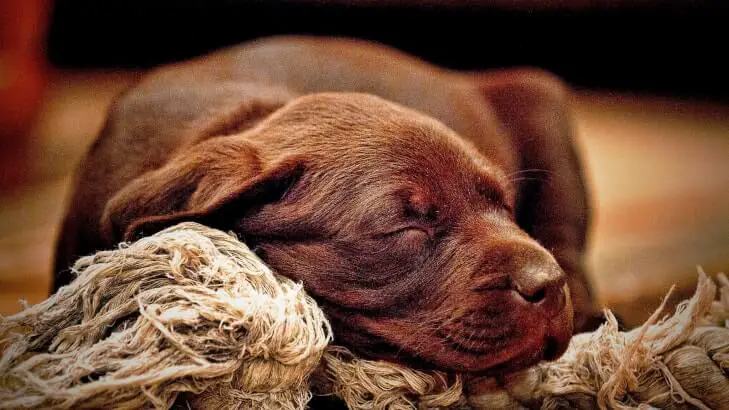Your puppy is bitting your hand, and you don’t know what to do. You went to Youtube and looked at trainers’ videos and realized that the best thing you can do is to give your puppy something that he can chew on.
That’s why you decided that it’s best to give your dog some chewy bones. However, you are not sure what types of bones, sizes, or even cuts that you should give to your dog.
More importantly, you are not sure that your dog is old enough to chew on bones.
I am here to help you through the struggle and give you the final summary of all the debates that have been there among vets over the last couple of years about chewy bones.
I will also tell you how I managed to know that raw bones are the best bones for your puppy.
Raw bones are the best for your dog, and they should replace any cooked bones. While Rawhide’s aren’t threatening to your dog’s health, it’s best to give them occasionally but not consistently.
That’s why we are going to discuss every little detail associating puppies eating bones and fix any conflict that might be in your mind.
What Is The Best Age For A Puppy To Start Chewing Bones?
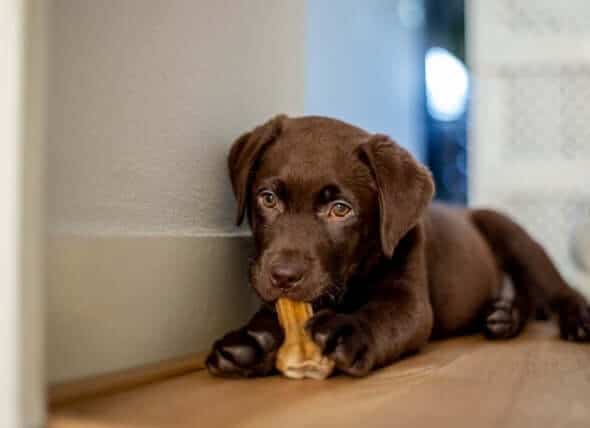
The puppy’s permanent teeth start to appear and reproduce between the ages of 4-6 months. Accordingly, it vets recommend introducing some fresh raw meaty bones around the period of 12 weeks.
This will ensure the active chewing around when the permanent teeth start erupting. Your puppy will find something so tasty that he will forget chewing your hands and fingers.
If your puppy has any unnatural behaviors, then ask your vet before giving him any new food or stuff. Make sure that your puppy is tolerating the new menu.
What Kinds Of Bones Are There?
There are three main types of bones:
The rawhide bones:
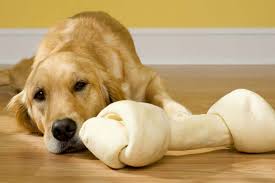
Typically, dogs love the rawhide bones. They are a great, long-lasting chew for puppies that keep them busy as well as being a tasty snack.
Additionally, they help clean the teeth and promotes oral health. But, the answer to the question of being safe or not depends on several factors:
- Because dogs are different, the safest treats and toys depend on the chewing habits of your dog. Some breeds are more likely to be soft chewers than others are.
- Also, the age of the dog is one of the factors on which the rawhide safety depends on.
For example, young puppies and senior dogs have a softer mouth than their adult counterpart. Accordingly, it’s a safe assumption that your dog’s chewing style will change over time.
Since this kind of treat is meant to be a long-lasting chew that can be broken into soft, tiny pieces. You should avoid giving them to strong chewers because they will be able to break off this treat into large chunks that may cause intestinal blockage.
It is safe for soft chewer dogs because they won’t be able to break them down into pieces.
Cooked bones:
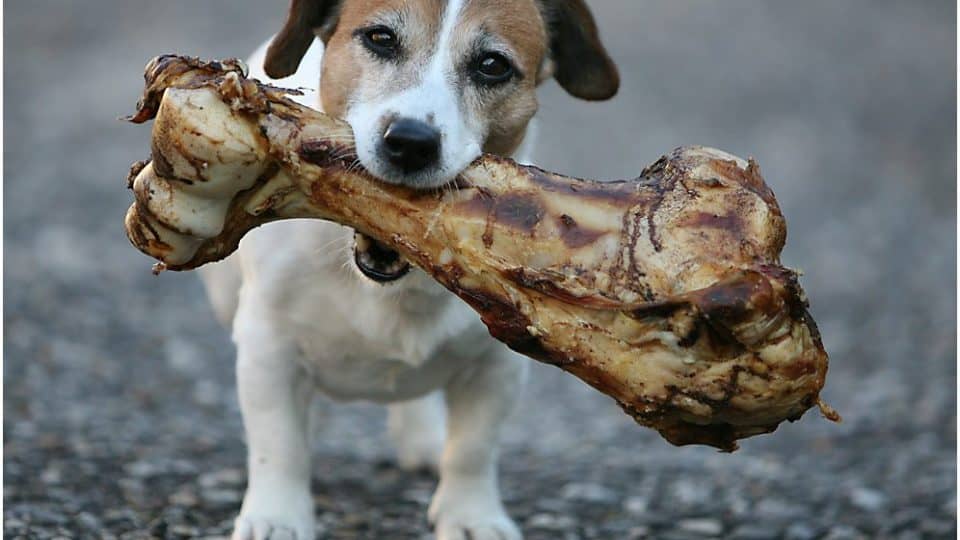
You have just finished your fantastic steak and willing to give some rib bones for your dogs?
Sorry to tell you, vets prohibit anybody from doing so, and prevent cooked bones at all.
The cooking process makes the bones more breakable and quickly sprinted, which may cause digestive problems or internal injuries. Cooking also removes all the nutrients inside the bones.
You should avoid providing cooked bones for your dog. Here are some of the risks that your dog will be facing when chewing cooked bones:
- Broken teeth.
- Mouth or tongue injuries.
- Bone might be looped around your dog’s lower jaw.
- They can get stuck in the esophagus.
- Bone gets stuck in windpipe. This may happen if your dog accidentally eats a small enough piece of bone.
- Bone gets stuck in the stomach. It might go down just fine, but the bone may be too big to pass out of the stomach and getting into the intestines.
- Bone gets stuck in the intestines and causes a blockage.
- Constipation due to bone fragments. Your dog may experience a hard time passing the bone fragments if they’re very sharp, they can scratch the inside of the large intestine or rectum as they move along. Additionally, bones also contain a lot of calcium, which is very firming to the stool.
- Severe bleeding from the rectum. Sharp undigested bone fragments cause it.
- Peritonitis. This is a result of the bacterial infection of the abdomen caused by bone fragments.
The raw bones:
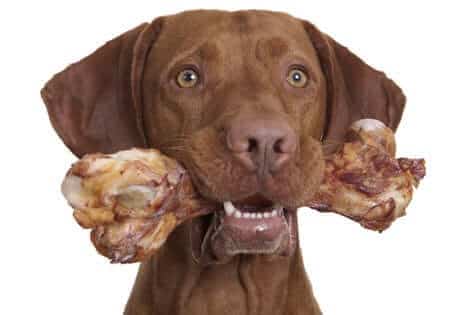
Raw bones act as a piece of floss in the mouth of your dog. Polishing and scraping away tartar as he crunches and gnaws. The raw meat creates an acidic oral environment to retard plaque formation and freshens the dog’s breath.
Many holistic veterinarians recommend raw bones to cooked ones. They even advise providing uncooked bony parts of the chicken, beef knuckles, marrowbones, or lamb bones.
These kinds improve the health and well-being of your dog; provide proper nutrition, teeth hygiene, and full-body exercise.
There are two types of raw bones:
1- The Edible raw bones:
They are the hollow, non-weight bearing bones for birds. For example, chicken and turkey necks. These are also soft, pliable but do not contain marrow. These can be easily crushed in a meat grinder.
2- The recreational raw bones:
They can be divided into long bones found in the wings of animals or the legs and in flat bones found in the spinal column, ribs, and shoulder. Long bones contain lots of marrow, and the opposite is true for flat bones.
What Is The Perfect Bone Size For Your Dog?
Bones should be larger than the size of the dog’s muzzles so that it wouldn’t be easily swallowed whole.
A good example is beef shank bone. Also, avoid giving your dog large round bones. The gnawing on these round bones might cause broken teeth, tooth root infection, or even abscesses.
How Often Should Your Dog Be Offered Raw Meaty Bones?
You can offer raw bones between 2-3 times a week with a few days in between serving to promote dental hygiene and provide a natural, satisfying chew session for your dog.
However, this may vary from one dog to another, so its recommended to talk to your vet for advice.
Raw Bones That You Should Avoid
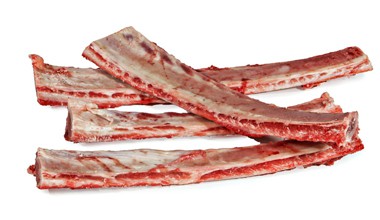
In conclusion, the safest is the raw bones. However, some raw bones are hazardous, and vets recommend not to give them to your puppy. For example:
- Pork bones, which easily splinter and crack.
- Rib bones of any kind are small and likely to crack or get stuck in your dog’s throat.
- Any bone that is smaller than your dog’s mouth can be swallowed in one piece.
Precautions When Offering Raw Bones For Your Puppy

- It is preferred to find raw (not boiled, steamed, or baked) knuckle bones at your local butcher shop or meat counter at your supermarket ( usually called soup bones).
Store these bones in the freezer and thaw them one at a time before giving them to your dog. Be careful not to choose bones that have lengthwise cut like the leg bone. These are more likely to splinter. - I recommend that you match the bone size with your dog’s head. Small bones can cause oral traumas.
- Try to offer the chew bones to your dog after a full meal. The hungry dog is more likely to swallow the whole bone or bite it in two to eat a huge chunk, which may cause an obstruction in the digestive tract.
- Make sure to keep an eye on your dog during his work on a bone. Prevent him from carrying his bone to a corner alone without your supervision.
- If you notice that the bone has been gnawed down in size, just throw it away. Don’t allow your dog to break it down to small pieces that he can swallow.
- Don’t treat bones as something that your puppy will keep chewing on to burn some energy while you’re busy. Always supervise your puppy closely until he is old enough that you can trust him.
- If your puppy suffers from any vomiting or any weird behavior, always go to your vet and stop giving him more bones.
- Combining Raw bones with a very-hard training class will make your dog more into training.
- The bone marrow is fatty and might cause diarrhea to dogs with a sensitive stomach.
Be aware of the calorie intake, bones containing a lot of marrow can be high in calories. - In all cases, I recommended throwing out the bone after a couple of hours.
What To Do If Your Puppy Stole Some Cooked Bones
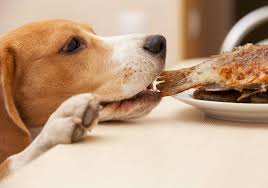
My dog, when she was a puppy, loved to play in the trash of the house. I assume many puppies are the same as my dog.
So you left the chicken bones in the trash and came to find your dog already ate them, what should you do?
- Don’t panic, calmly clean the mess your puppy has done. Please, don’t shout at your puppy as this might associate unfortunate events with him.
- Monitor your dog to determine if he has any symptoms of internal organs bleeding. Such symptoms may be:
- Lethargic puppy.
- Hard breathing.
- Lost appetite.
- Bloody stool.
- Vomiting.
- Can’t defecate.
- Lethargic puppy.
- If you notice any of these symptoms, go straight to your vet. Avoid giving your dog any medicine that helps him defecate without the advice of your vet.
- If your dog feels well and natural, monitor his stool. Generally, anything the dog eats must be out of the dog’s stomach within three days.
If you can’t find any bone fragments in your dog’s stool over those 3 days, then probably your dog can’t get the bones out. You would need the help of the vet in this case.
Emergency Handling
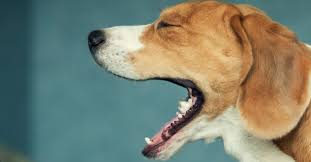
Sometimes puppies eat something that gets stuck in their throat, and you have to move quickly.
We have already covered the detailed guide to help your dog, who has something stuck in his throat.
Make sure to see the vet once you remove the stuck object to ensure that your dog isn’t hurt.
Advantages Of Bones For Your Dog
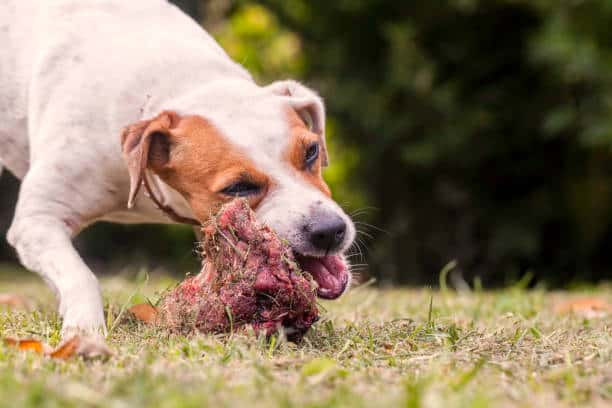
It is agreed that chewing bones have nutritional benefits for the dog. It contains the proper mineral balance, which eliminates concerns about over-supplementing a single mineral.
The raw bony parts provide essential fatty acids and fat-soluble vitamins and contribute to providing calcium and other minerals.
While, the marrow is a vital factor in blood-formation, including iron and copper, as well as collagen, cartilage proteins, and valuable amino acids.
Other benefits:
- It keeps your dog occupied.
- Chewing helps to prevent tartar and plaque buildup on the dog’s teeth.
- It can stimulate adult teeth growth in puppies.
- It can strengthen the stomach muscles, which prevents bloat, fostering healthy bowel movements, and prevents anal gland problems.
- Over and above, chewing bones is better than chewing up your shoes.
- If your dog is eating more bones than he needs, don’t worry. The excess is excreted. It is normal to see some chalky, crumbly stool.
They are the big chunks of beef or hipbones that are filled with marrow.
As your dog chews the recreational raw bone, especially the meaty ones with cartilage and soft tissue, his teeth get a good brushing and flossing. These also help in breaking down tartar and reduces gum disease risks.
Conclusion
As puppies and bones are a natural pairing and chewing is a natural dog behavior. There are safe dog chews and bone types that can provide the mental stimulation and the nutritional benefits needed.
While cooked bones are seriously dangerous for your dog, raw recreational bones offer significant benefits.
Don’t forget two basic rules while offering raw bones to your dog—the right bone size and supervising your dog whenever he is working on a bone.
After all, always follow your vet’s advice.

